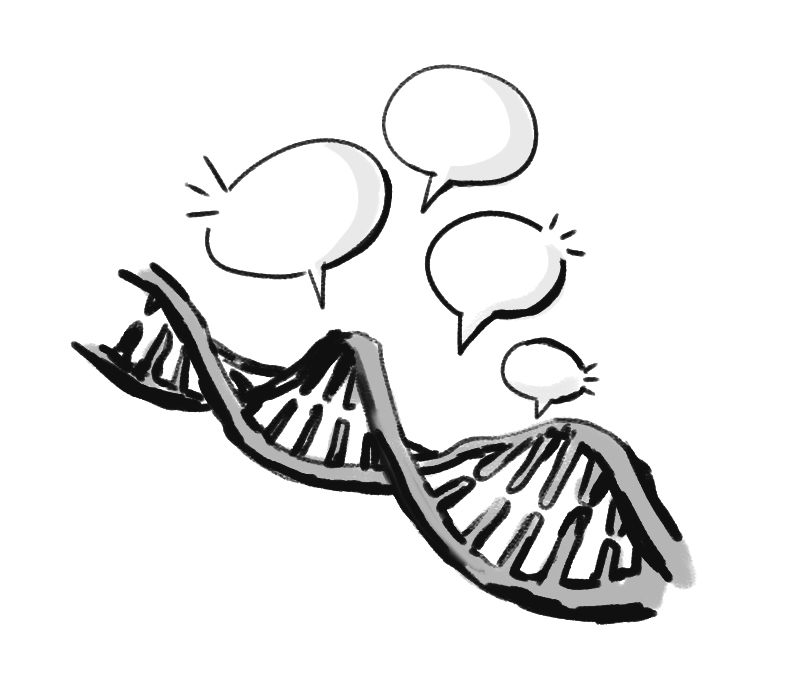
Yale researchers investigated the intersection of genetics and linguistics in a new study published on April 16 in the journal PNAS.
Associate research scientist Mellissa DeMille, along with a team of other researchers from the Yale School of Medicine, Zhejiang University and Brock University, discovered a correlation between an element that regulates how genes are expressed — named READ1 — and the different phonemes of languages. A phoneme is the set of sounds in a language that distinguishes one word from one another. Specifically, the study examined the number of consonants in 43 different languages.
“It is really exciting to begin to see an association between something biological like these genetics and the culturally transmitted phenomena of language,” said Christopher Geissler GRD ’20, a co-author and linguistics doctoral candidate. “From the perspective of linguistics, the mind is a black box and we’re only beginning to develop tools in neuroscience that can start to look into the box.”
According to DeMille, the researchers started with a gene called DCDC2, which is associated with dyslexia and the processes for reading.
The researchers found that READ1 regulates the DCDC2 gene and that there are over 40 different alleles, or variations in populations, in READ1. By examining the alleles present in different populations, they found that a certain subclass of alleles was related to the number of consonants in languages, regardless of genetic relatedness, geographic proximity or language family.
Kenneth and Judith Kidd, both Yale genetics researchers, provided the DNA samples, which are part of the collection they have curated since the 1980s. Samples were derived from the 43 populations on five different continents.
According to the study’s abstract, the variation in READ1 led to a “subtle cognitive bias” that helps explain the different ways in which some languages use consonants.
Linguistics professor Robert Frank, who was not involved in the study, said he found these results significant.
“In almost every linguistics class, we operate from the assumption that there’s this hard-wired component that is uniform,” said Frank, who teaches a class about the cognitive science of language. “What’s interesting about these results is that there seem to be differences in the biology that’s relevant that drives some small biases in one way or the other.”
These effects on different populations’ languages have taken place over thousands of years, Geissler said.
Nevertheless, Geissler warned that people should be careful not to overemphasize the differences among languages. People have vastly more similarities than differences, he said, and while linguistic differences are worth investigating, they are the exception, not the rule.
“As a linguist, what I want people to generally come across is a real appreciation of the diversity of human language,” he said.
Geissler added that all languages are equally expressive and that any child could learn any language.
Frank agreed, stating that genetics do not make someone able or unable to learn a language.
That is important, Geissler said, because linguistic research has been used to provide credibility to hateful beliefs.
“There is also the concern that linguistics in the past has been used to justify colonialism, imperialism, racist ideologies,” Geissler said. “For a while we’ve been very wary, as a discipline, of anything that could be read as heading in that direction.”
The researchers are still collecting data from more populations and hope to do a follow-up project on their study.
While her team’s finding only scratches the surface of understanding what makes us human, DeMille said, she believes language is a fundamental part of the puzzle.
She added that she hopes the results will yield not only an understanding of different languages but also potential ways to help kids with dyslexia.
“The more we understand these mechanisms, the more we’re able to intervene and help them,” she explained.
Meera Rothman | meera.rothman@yale.edu







